…we ate a curry of tender, translucent green mangoes. The summer heat raged across the country and our normally enviably cool city quailed under the fury of the sun. Everywhere, the pre-summer showers did not fall. Those much needed early showers stir the highly covetable, tiny, wild, pepper scented mangoes of Coorg to life; but this year, the clouds blew away, taking with them our hopes for pickles, curries and mor pajjis (raitas) that would last the entire season and well into the next year in one form or another.  Kind friends scoured the countryside and sent what they could salvage from this year’s offerings. One of them dug into her store of last year’s wild mangoes preserved in brine, and sent a generous jarful across, just perfect for a mor pajji. And I, ever the hoarder, ever cautious, often to the amusement of my family, have my collection from last year, preserved in joni, a syrup of melted, boiled and strained jaggery. So the table will have its wild mangoes as usual, or at least, almost as usual.
Kind friends scoured the countryside and sent what they could salvage from this year’s offerings. One of them dug into her store of last year’s wild mangoes preserved in brine, and sent a generous jarful across, just perfect for a mor pajji. And I, ever the hoarder, ever cautious, often to the amusement of my family, have my collection from last year, preserved in joni, a syrup of melted, boiled and strained jaggery. So the table will have its wild mangoes as usual, or at least, almost as usual. 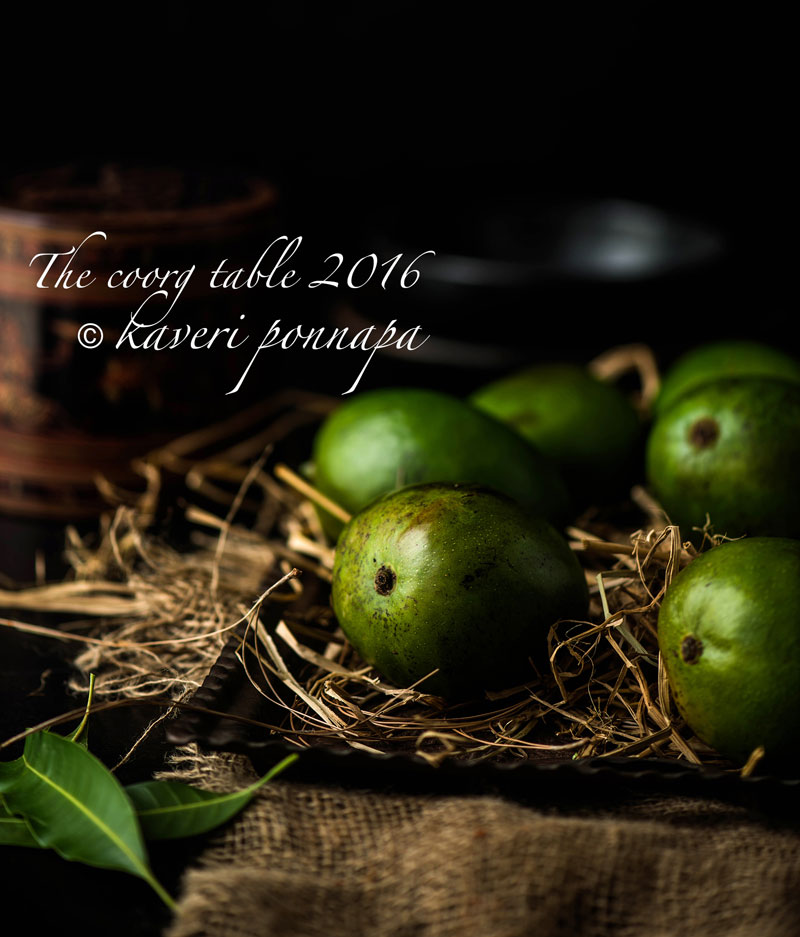 It sometimes takes a year of shortages to make us appreciate how many ways we love a fruit while taking it for granted, and how very early in the life of a mango we begin to enjoy it. The first wave of Coorg’s rounded, miniature mangoes is forest scented, with immature seeds, destined for pickling and preserving. As the seed swells and the flesh is flooded with sweetness the fruits come crashing down from tall, towering trees and we cook them into a curry and a mor pajji so good that, when the season is gone, we still carve them and find ways to bring them back to the table now and then.
It sometimes takes a year of shortages to make us appreciate how many ways we love a fruit while taking it for granted, and how very early in the life of a mango we begin to enjoy it. The first wave of Coorg’s rounded, miniature mangoes is forest scented, with immature seeds, destined for pickling and preserving. As the seed swells and the flesh is flooded with sweetness the fruits come crashing down from tall, towering trees and we cook them into a curry and a mor pajji so good that, when the season is gone, we still carve them and find ways to bring them back to the table now and then. 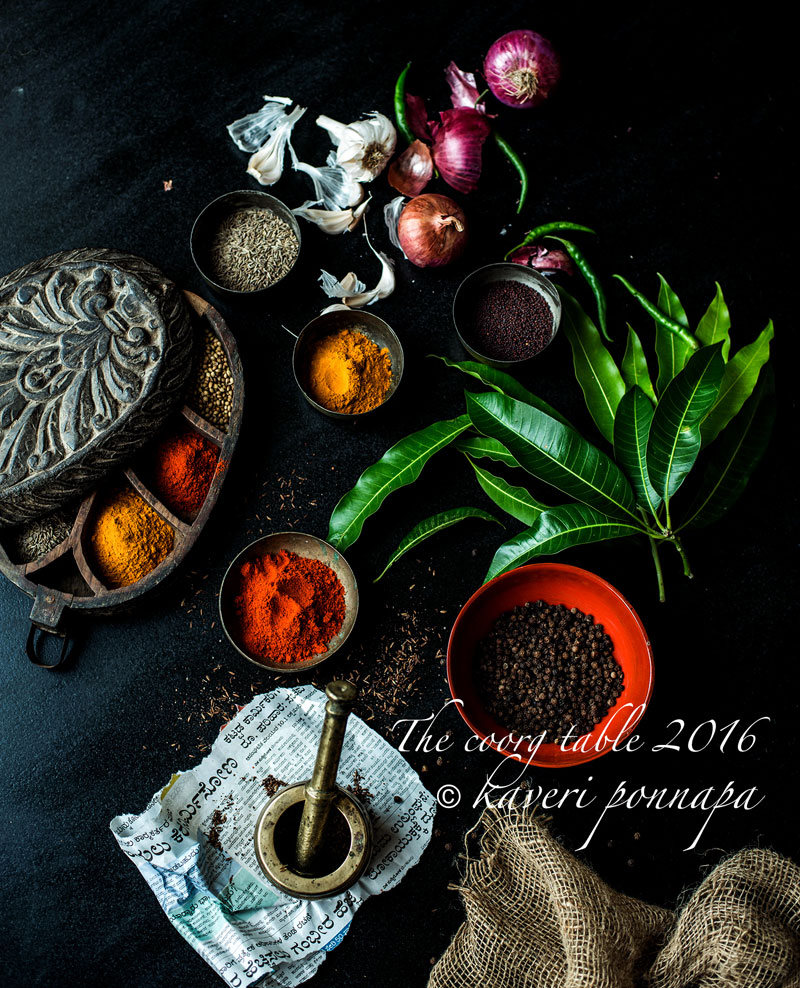 Early summer is when green mangoes reign in every kitchen across the country, in dozens of different kinds of curries, condiments, pickles, chutneys and drinks. The same mango gives you an incredible variety of tastes, textures and ways in which it can be used in cooking, depending on the kitchen to which it comes. It is so ancient, this fruit, and so much a part of our lives, our myths and stories, our culinary traditions –aam ka panna, murabba, aam ras and the deliciously raw and fresh kacche aam ka kuchla –that one can hardly think of an Indian summer without thinking of the mango.
Early summer is when green mangoes reign in every kitchen across the country, in dozens of different kinds of curries, condiments, pickles, chutneys and drinks. The same mango gives you an incredible variety of tastes, textures and ways in which it can be used in cooking, depending on the kitchen to which it comes. It is so ancient, this fruit, and so much a part of our lives, our myths and stories, our culinary traditions –aam ka panna, murabba, aam ras and the deliciously raw and fresh kacche aam ka kuchla –that one can hardly think of an Indian summer without thinking of the mango.  When we can tear ourselves away from the little round wild mangoes in Coorg, we make another curry with sliced green mangoes, any of the naati (indigenous) variety. The Coorg curry of sliced green mangoes is a beautiful thing, with a hint of the forbidden about it. Perhaps that sense comes from those raw, crisp slices sprinkled with spice, waiting to be cooked, smelling all the while of an untamed young summer. They remind you of the pinches of red chilli powder and salt that you once stole from the kitchen to rub onto hard, green, outrageously sour slices of the fruit plucked off a tree, eaten secretly, since it was not allowed, the young sap, the cause of sore throats – or so it was believed.
When we can tear ourselves away from the little round wild mangoes in Coorg, we make another curry with sliced green mangoes, any of the naati (indigenous) variety. The Coorg curry of sliced green mangoes is a beautiful thing, with a hint of the forbidden about it. Perhaps that sense comes from those raw, crisp slices sprinkled with spice, waiting to be cooked, smelling all the while of an untamed young summer. They remind you of the pinches of red chilli powder and salt that you once stole from the kitchen to rub onto hard, green, outrageously sour slices of the fruit plucked off a tree, eaten secretly, since it was not allowed, the young sap, the cause of sore throats – or so it was believed. 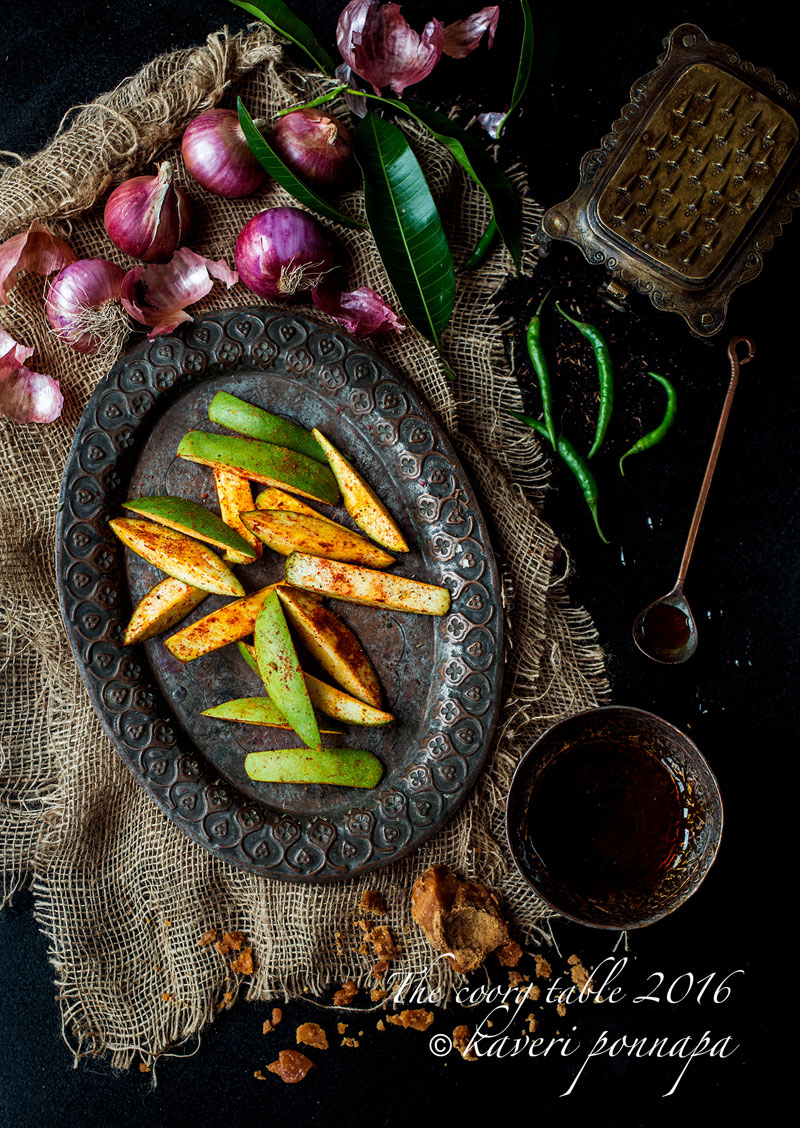 The hard green flesh becomes very soft on cooking, and the flavours in the earthenware pot are complex, confusing and delightful. One moment you’re sure that it’s a murabba that you are eating, as you taste the dark sweetness of jaggery syrup; the next moment the hidden bite of black pepper and red chilli assert themselves – and all the while there are flashes of the fresh, exciting sharpness from the heart of the raw mango that neither the spice nor the sweet could subdue. Invariably, I eat this with plain white rice and no other accompaniments, to be able to savour every little twist and turn it puts out. Is it a pickle, a preserve or a curry? Or a bit of all three? I still can’t make up my mind.
The hard green flesh becomes very soft on cooking, and the flavours in the earthenware pot are complex, confusing and delightful. One moment you’re sure that it’s a murabba that you are eating, as you taste the dark sweetness of jaggery syrup; the next moment the hidden bite of black pepper and red chilli assert themselves – and all the while there are flashes of the fresh, exciting sharpness from the heart of the raw mango that neither the spice nor the sweet could subdue. Invariably, I eat this with plain white rice and no other accompaniments, to be able to savour every little twist and turn it puts out. Is it a pickle, a preserve or a curry? Or a bit of all three? I still can’t make up my mind. 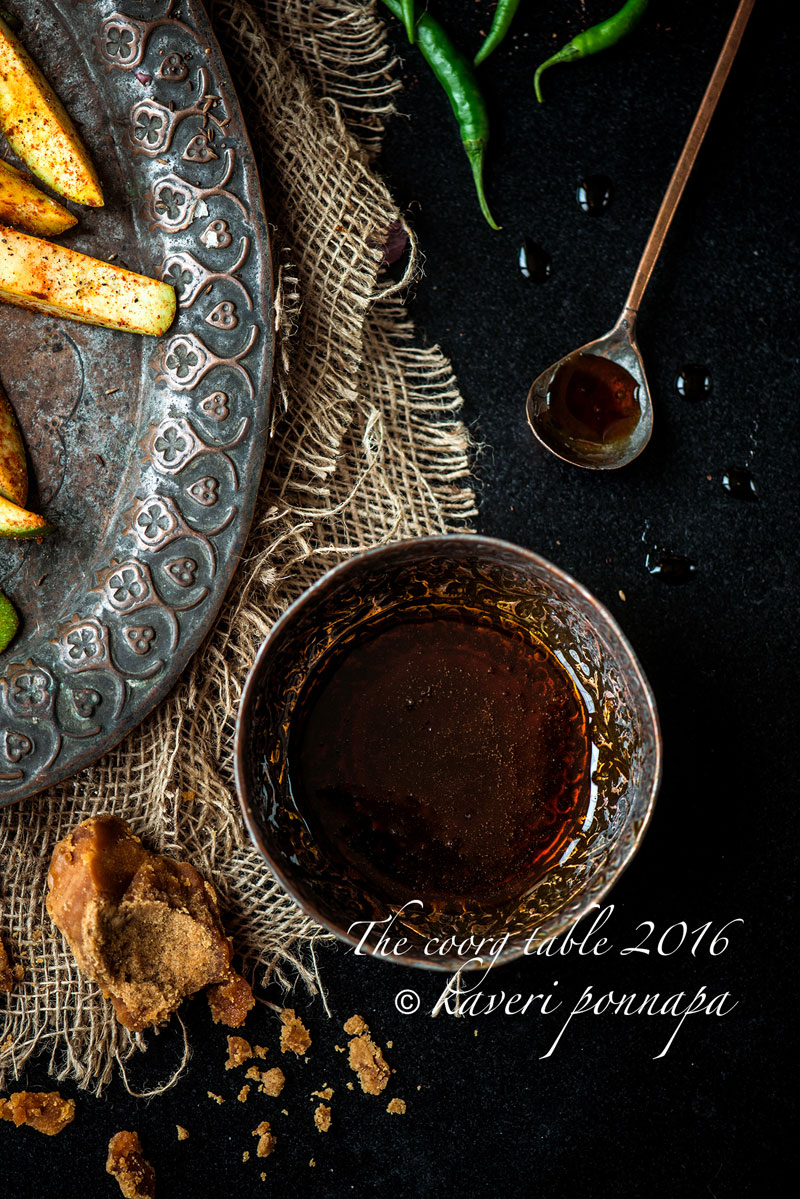
The mango is a timeless fruit, tangled up in layers of stories, with a deep sense of place. Where there are old trees – and many of them live for centuries –they take on personalities of their own. At Kirugavalu village in the Mandya District of Karnataka, an Archaeology graduate runs a 250 year-old family farm filled with mango trees that is a sort of living museum. Some of the trees are two centuries old. Some fruit smell of sweet lime, others throw out hints of apple. Some trees produce fish shaped fruit. There are about 120 varieties of mangoes, and all of them taste unique. This one farmer’s efforts to promote the beauty and uniqueness of this fruit have won him the ‘Plant Genome Saviour’s Farmer’ award.
So I wonder what people could have been thinking when last year, the mango tree was exempted from the Karnataka Forest Rules that prevented it from being cut without permission: as a result, hundreds of full grown mango trees, some of them rare species, were felled without thought. Maybe the rule makers have never eaten a mango in their lives.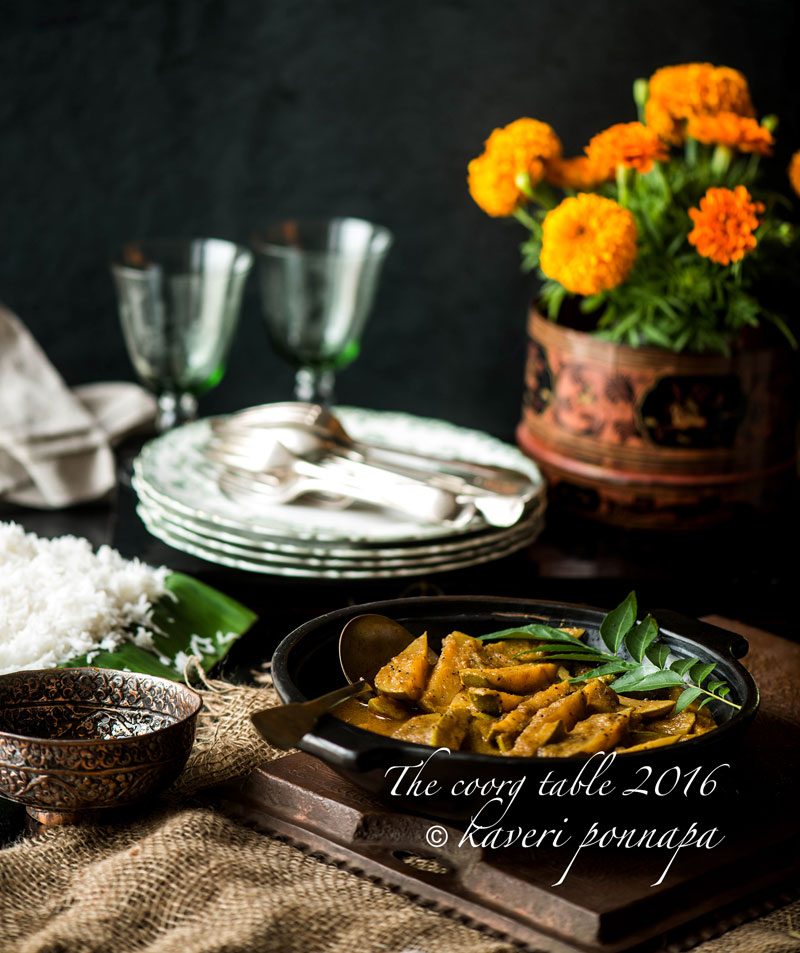
Photo Credits: Nithin Sagi
All Food Styling: Kaveri Ponnapa
Thank you for visiting this page. If you read something that you enjoy, or see an image that you like, please take a moment to write a response. Do look out for the recipes of all the food featured here in my upcoming cookbook.

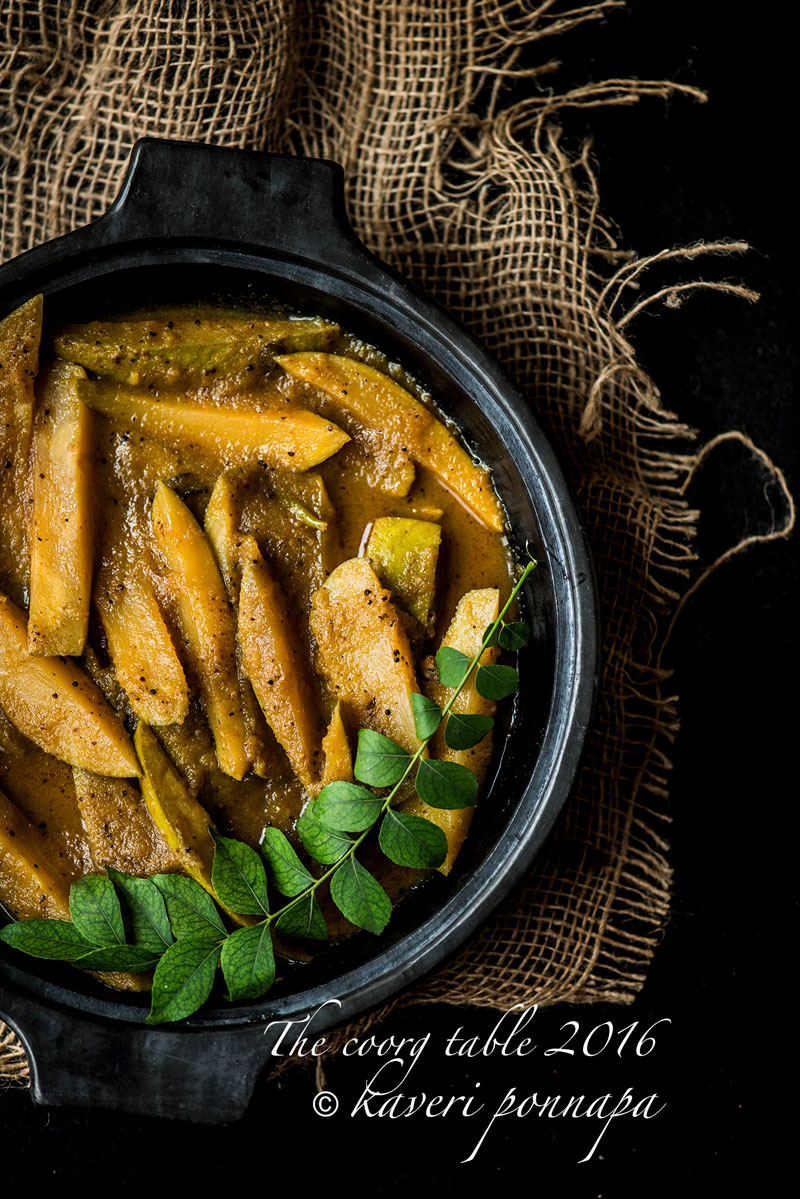



As I read, I smiled at the similarities of how we treat mango season here in the Caribbean, especially Guyana, where I am from, Trinidad, and Suriname – a time to make pickles, chutneys, drinks and yes curries too. Not to mention snacking. Vendors outside of schools and street vendors will have peeled green mangoes along with little packages of pepper and salt – red hot peppers, smashed, bruised and mix with salt. Fun and happy times. We also make a condiment called sour – green mangos cooked with salt and hot peppers, sometimes with a bit of cumin powder and we use it as a condiment with black pudding (blood pudding sausage), phulourie (split pea fritters), cassava balls, potato balls and eggs balls.
Hi Cynthia, thank you very much for sharing all this mango knowledge, and even more ways to love a mango. Everything sounds so familiar, and yet I am sure that the final flavours are unique. I would love to try out the cuisine of the Caribbean first hand, and I am sure that I will, some day. Do try out this curry, I think that you will love it. Warm wishes.Kaveri
Mango Wow!! When ever I hear Mango I feel mouth watering……Mango raw, ripe, curry, Pajji, Pickle, juice in any form I like mangoes. The images of mango with chilli powder Ah….super!!! Your writing is always nice and also collection of vessels which is in images are also good…Keep on posting it’s really good to read and view the images…WoW..Thank You!!
Hi Kaverappa, I hope that you will try this curry, it’s vegetarian and absolutely delicious and tastes very good with plain white rice! I’m so glad you like the post, I certainly enjoyed writing it, and capturing the mood of a green mango curry. Keep visiting these pages. Warm wishes.Kaveri.
So timely ! Summer is here and mango season; and too often we forget that the mango can be enjoyed in all stages. Will have to try this recipe as soon as I can get some raw mangoes at the local Indian store. Sounds and looks piquant . In Kerala we have a variation using ripe mangoes, usually in yogurt, that provides the sweetness with the savory .
Hi Kishore, I’m sure that you are going to love this curry, it’s a beautiful blend of flavours. Hope you can eat it more than once this summer! Warm wishes.Kaveri